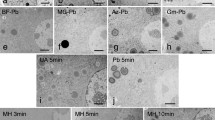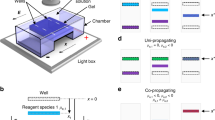Abstract
DIFFICULTIES are often encountered in reading off immunological reactions on gel plates (cf. immuno-electrophoresis). The gel method, however, has many indisputable advantages over tube precipitation even if the latter is considered more sensitive quantitatively. The former has often been utilized for qualitative studies of the various components involved in immunological reactions. In this connexion it is often important to know whether or not the plate contains a precipitate which is not visible either macroscopically or microscopically (cf. interference microscopy). Various fixatives have been employed in order to detect or accentuate an immunological reaction before proceeding to qualitative studies. Acetic acid and alcohol in various concentrations have been most commonly used for this purpose.
This is a preview of subscription content, access via your institution
Access options
Subscribe to this journal
Receive 51 print issues and online access
$199.00 per year
only $3.90 per issue
Buy this article
- Purchase on Springer Link
- Instant access to full article PDF
Prices may be subject to local taxes which are calculated during checkout
Similar content being viewed by others
Author information
Authors and Affiliations
Rights and permissions
About this article
Cite this article
BERGRAHM, B. Glacial Acetic and Picric Acids as a Fixation for Gel Precipitation. Nature 185, 242–243 (1960). https://doi.org/10.1038/185242a0
Issue Date:
DOI: https://doi.org/10.1038/185242a0
Comments
By submitting a comment you agree to abide by our Terms and Community Guidelines. If you find something abusive or that does not comply with our terms or guidelines please flag it as inappropriate.



